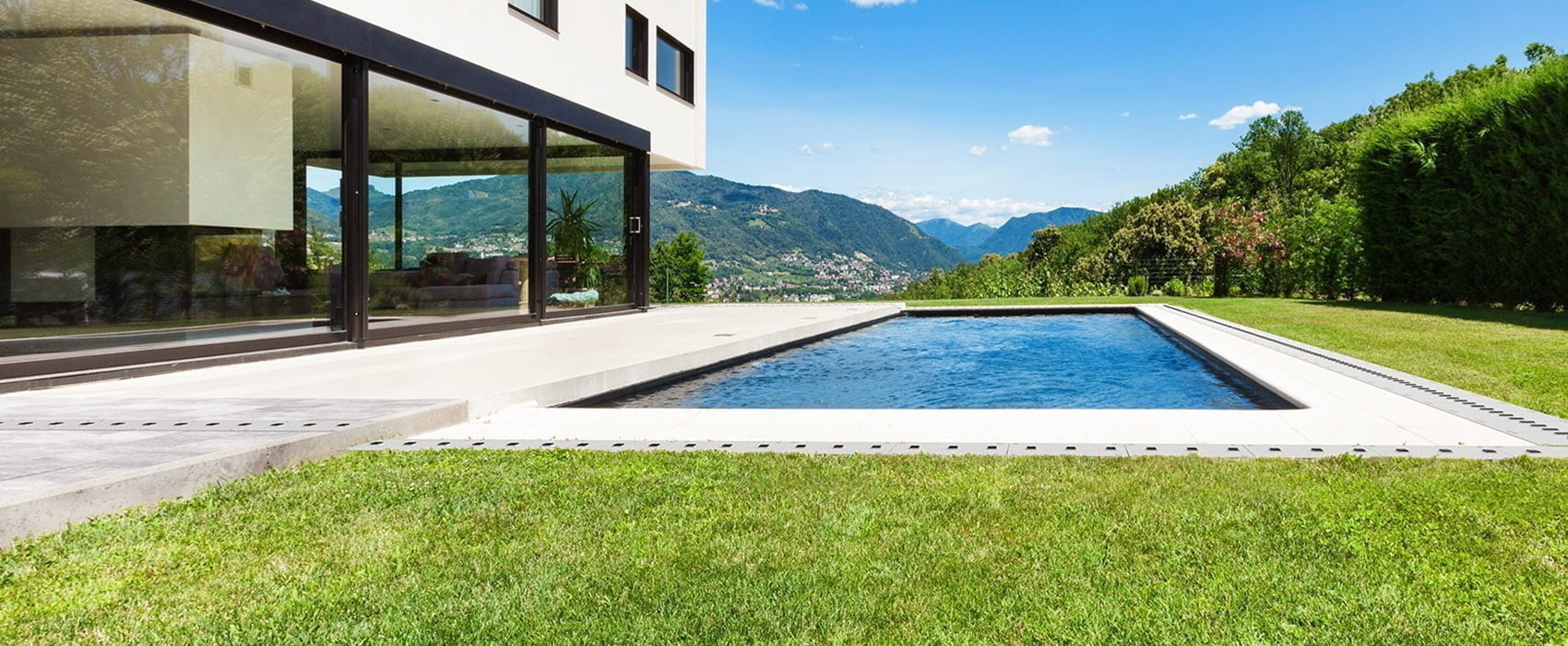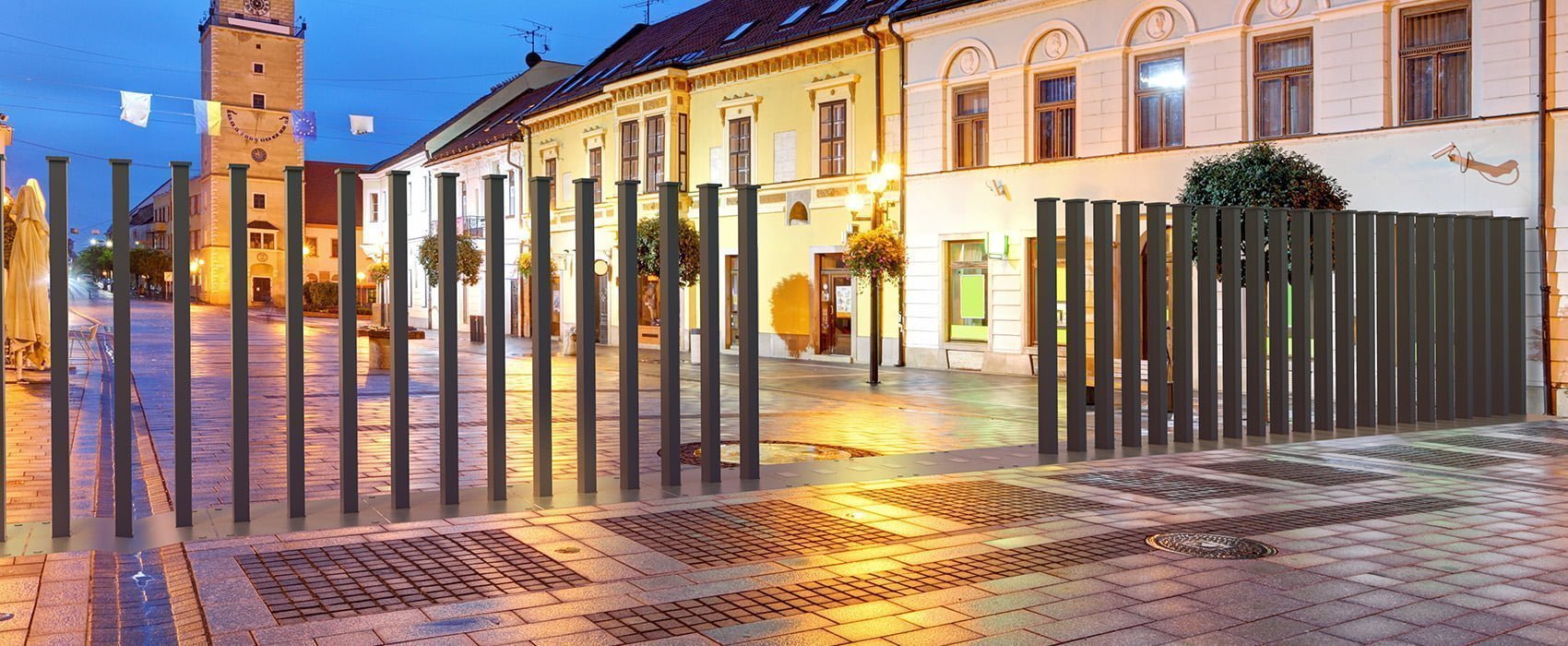Design and maximum safety – fence systems

The vision of modernity in architecture. Fence systems
In a world where minimalism meets innovative security solutions, projects emerge that set new standards. Two of them, “Banana Gate” and the “Console” project in Minsk, represent pinnacle achievements in design and technology.
Banana Gate – elegance and functionality
The “Banana Gate” type gate by Fancy Fence has gained recognition for its unique ability to adapt to non-standard shapes, offering both aesthetic elegance and maximum security. It’s the perfect combination of minimalism and functionality, seamlessly fitting into modern spaces. See also other implementations at https://fancyfence.eu/completed-projects/.
The “Console” project – a new era of security in Minsk
The “Console” project, realised in the vicinity of the President of the Republic of Belarus’s residence “Drozdy”, represents the next step in the evolution of urban security. The central element of the system is a gate section that lowers into the ground, combining reliability with modern design. This innovative construction is an excellent example of how modern solutions can fit into a prestigious environment without disrupting its aesthetics.
Minimalism meets modern technology. Retractable entrance gates
Both projects, “Banana Gate” and “Console”, combine minimalist design with advanced technologies. In the case of the “Console” project, the modular construction allows for creating fences of various lengths, perfectly complementing modern architecture. It proves that security and aesthetics can go hand in hand.
Security in a new edition. Underground fences for properties
The “Console” and “Banana Gate” projects demonstrate how security can be integrated into everyday life in a way that not only protects but also adds aesthetic value. These are solutions that emphasize modernity and style, while also providing peace of mind.
The future of design and security
Projects like “Console” and “Banana Gate” are an excellent illustration of how innovations can transform our approach to design and security. It’s a combination of modern style with maximum security, transforming the way we think about urban and private infrastructure. Thanks to these projects, minimalist design meets maximum security, creating spaces that are both beautiful and safe. Underground automatic gates are a complement to any project.
Innovative solutions for home and garden

Innovation in home and garden
In today’s world, where functionality meets aesthetics, innovative solutions for the home and garden are not only desirable, but essential. One such groundbreaking solution is the Fancy Fence gates, which combine security with a unique design.
Curved gates – challenge accepted!
The “Banana Gate” project is an excellent example of an innovative approach to client needs. When a demand for a non-standard shaped gate emerged, the team rose to the challenge, creating something entirely new. Accepting the challenge of creating a curved gate shows how flexibility and creativity can lead to spectacular results.
More than a gate
Fancy Fence redefines the concept of a gate. Their innovative design allows the gate to be completely hidden in the ground, which not only saves space but also ensures rapid opening and closing. This solution, which combines functionality with aesthetics, is perfect for those who value both security and design.
Banana gate – fitting every curve
The new “Banana” gate from Fancy Fence is an example of an innovative approach to individual client needs. The ability to adapt the gate to almost any curvature opens new possibilities in designing private and public spaces. This solution shows that limitations are only a state of mind. See how we do it here.
Meeting technical and aesthetic requirements vs. retractable entrance gates
Each gate in the ground-hiding system is made to order, ensuring it is perfectly suited to the specific requirements of each location. This flexibility in design and execution means that they are products that are not only functional but also tailored to individual aesthetic needs.
Innovations in public spaces
Fancy Fence’s commitment to creating gates for public spaces, like train stations or subways, shows that innovative solutions are crucial not only in private spaces but also in public utility areas. This direction heralds even more creative and functional solutions in the future. Metal lowering gates are an example of this.
Challenges and future projects
Fancy Fence is not afraid to take on new challenges, as seen in their plans for future projects. Work on a gabion gate or a full-frame shows that innovation is a constant element of their development. Each new challenge is an opportunity to create something unique.
Innovation and creativity in the service of home and garden – functional underground fences
Fancy Fence demonstrates how innovations can transform our homes and gardens, making them not only safer but also more aesthetically pleasing. In a world where design merges with functionality, such solutions are not only welcome but set a new standard in space arrangement.
Modern solution for your garden
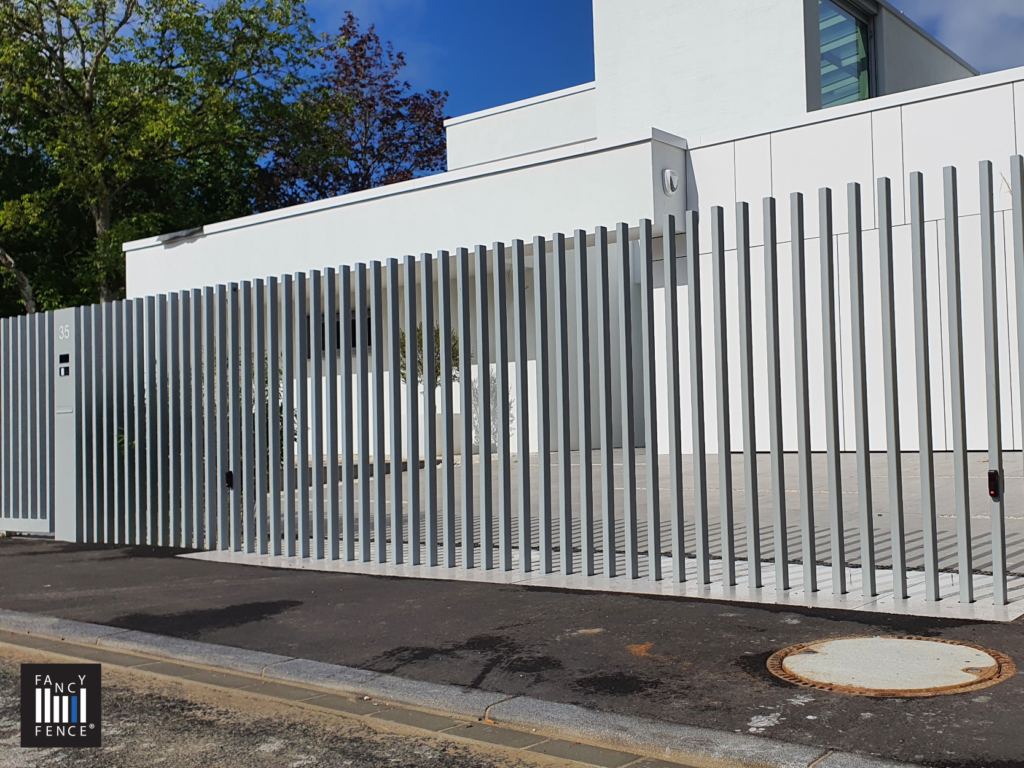
Panel fences. Retractable gates into the ground
When it comes to modern fencing, it’s worth noting the innovative approach of Fancy Fence, a company that created the Banana Gate version – a vertically sliding gate developed for a customer in Australia. This shows how flexibility and creativity can transform traditional fences into something unique. Also in your garden.
A globally unique project. Functional underground fences
Faced with the challenge of designing a gate that would follow the curve of a blind alley, Fancy Fence introduced something entirely new to the market. The company’s CEO, Jacek Kühnl-Kinel, emphasizes that this project required detailed calculations and drawings to give the underground structure and foundations the desired curvature.
Advanced technical challenges. Retractable fence barriers
Creating such a unique project required not only innovation but also precision in every detail. The Fancy Fence Australia team had to bend the elements precisely to achieve the desired effect. The end result – the Banana Gate fence – shows that the limitations of traditional fences can be overcome.
Combining functionality and aesthetics. Automatic gates
Fancy Fence gates stand out in that they are part of a permanent fence but retract underground when opened. This solution offers two main advantages: space-saving and quick opening. It’s the perfect solution for those who value both aesthetics and functionality.
Adaptable to any curvature. Access control system gates
The Australian solution demonstrates that a gate can be adapted to almost any curve, providing countless design possibilities. All components, including the concrete box, are customized to individual requirements, allowing for the creation of unique and personalized solutions.
The Banana Gate project, like the basic version of in-ground gates, comes with standard-sized fillings, but each gate is made to order and fully customized on-site. This allows for flexibility and adaptation to various customer needs. See projects at https://fancyfence.eu/completed-projects/.
Fancy Fence panel fences, with their revolutionary approach to design and functionality, are the perfect solution for those seeking modern and unique solutions for their gardens. With the Banana Gate version, the company demonstrates that the limitations of traditional fences can be surpassed, offering customers customised and striking solutions.
This might interest you: https://www.fencingtimes.com/_files/ugd/233e7b_50976ab91ce2412f929dd93d49e60c5c.pdf
Exclusive gates and fences. System gates
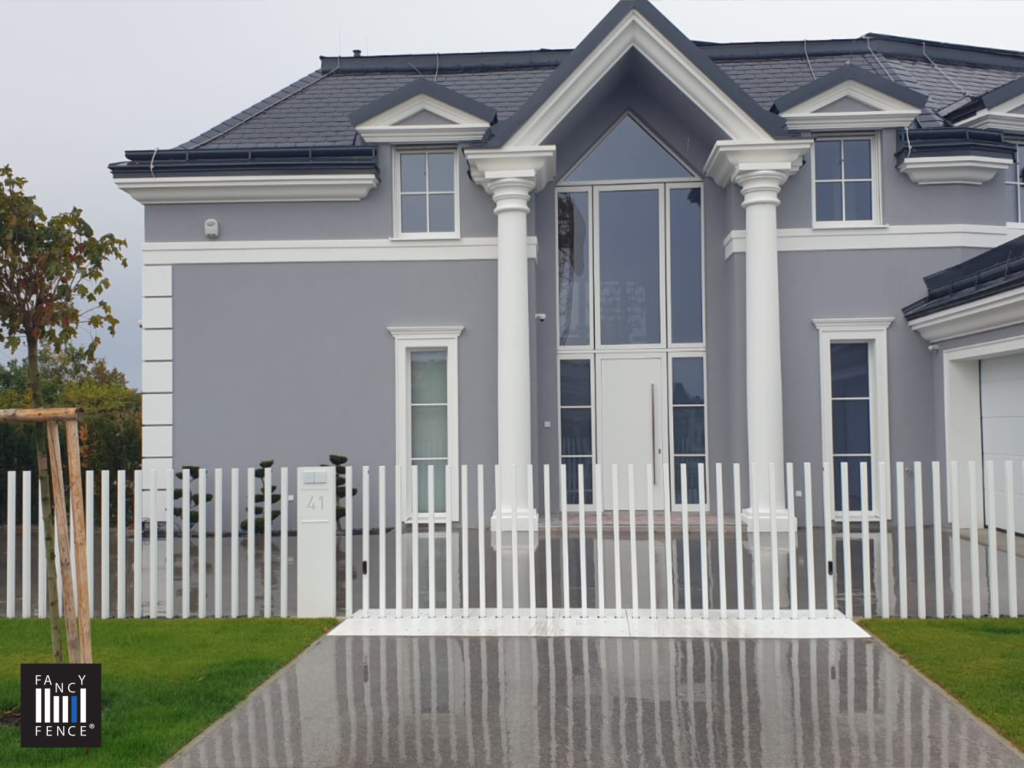
Safe, functional, and reliable solutions in the field of gates and fences set new standards in luxury and innovation. These unique solutions are synonymous with elegance and advanced technology, perfectly fitting the needs of sophisticated architectural projects.
Retractable gates into the ground
- Invisibility and elegance: The distinctive feature of these gates is the panel that becomes invisible when retracted into the ground, ensuring exceptional aesthetics and subtlety.
- Durability and stability: Each gate, situated in a solid concrete pit, guarantees long-lasting stability and durability.
- Modular construction: The system allows for the creation of fences of varying lengths, tailored to specific customer requirements and preferences.
Design customisation. Infinite possibilities
Fancy Fence, a manufacturer of in-ground retractable gates and fences, offers a wide range of materials, from elegant steel posts to modern glass panels and Corten solutions. Every element can be customised to individual preferences, enabling the creation of a unique and personalised fence.
This might interest you: https://www.fencingtimes.com/_files/ugd/233e7b_50976ab91ce2412f929dd93d49e60c5c.pdf
Reliability is the priority. Electric retractable gates
Low failure rates are a crucial aspect for Fancy Fence system users. Advanced safety solutions, such as dual photocell systems and overload sensors, are standard. The gate’s design ensures safe operation even in the event of a malfunction. The systems are designed to function in extreme weather conditions, resistant to sand, dust, extreme temperatures, and ready for installation on inclined driveways, meeting the highest market demands.
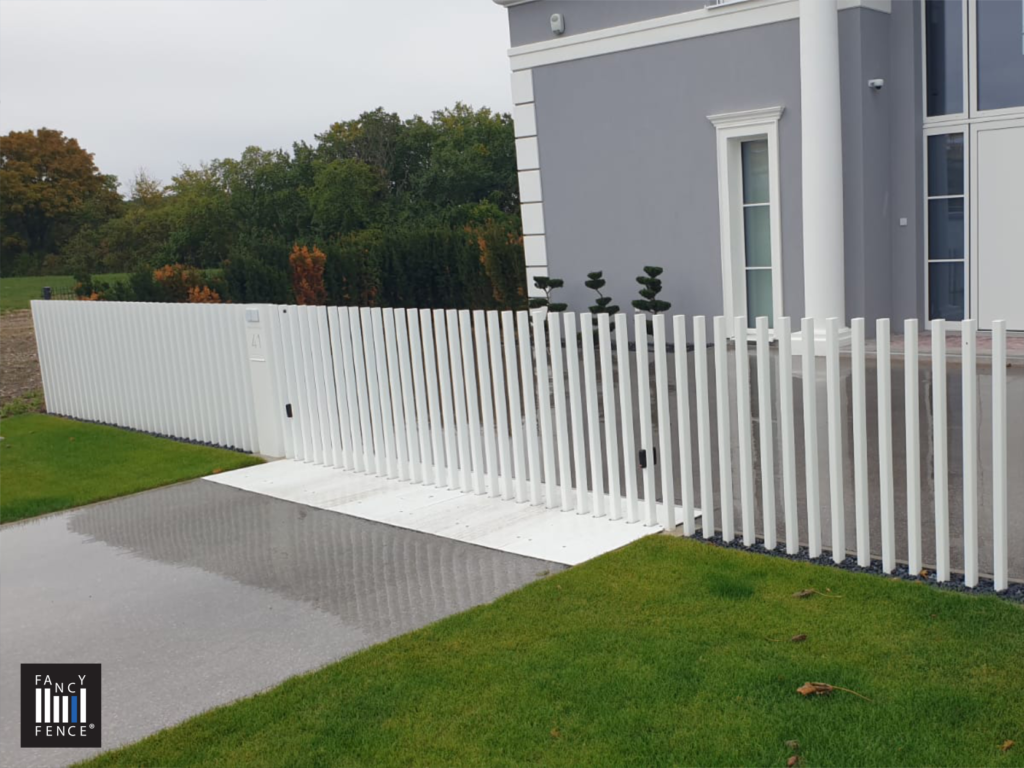
Easy installation and operation. Anti-burglary gates
The installation of Fancy Fence systems is characterized by simplicity and efficiency. Precise instructions and experienced installation teams ensure trouble-free operation for many years. Fancy Fence gates and fences are not only practical elements of fencing but symbols of modernity, luxury, and innovation. These solutions are perfectly suited to meet the needs of the most prestigious architectural projects. For more information on exclusive solutions, Fancy Fence invites you to contact distributors. See our projects at https://fancyfence.eu/completed-projects/.
Fences and gates retractable into the ground. You must see this: https://www.youtube.com/channel/UC09KcIlcLUfGUsoLPmEAi6w/videos
Safety first. Securing underground gates and fences

On the significance of safety in our lives or securing underground gates
Threats such as crime and terrorism are becoming increasingly real, and the importance of safety in both public and private spaces is growing. Urbanisation and dynamic changes in society mean that safety is no longer just a challenge, but a priority.
Urban planning and technology – allies in the fight for safety
Urban design has a huge impact on our sense of safety. Adequate lighting, a clear spatial layout, and easy access for emergency services are the foundations that create safe public spaces. Additionally, modern technologies such as CCTV cameras, facial recognition systems, and intelligent lighting are increasingly being used to enhance our sense of security.
How to secure our homes? Fence security systems
Safety in private spaces begins right at the doorstep. From fences with motion detectors, gates with access control systems, to anti-burglary protections on windows and doors, and advanced alarm and monitoring systems – each element plays a key role in protecting our homes. Learn about the system: https://fancyfence.eu/product-2/.
Education and social awareness in the service of safety
However, the role of education and raising social awareness cannot be forgotten. Educational programs that teach how to recognize threats and how to react in crisis situations are invaluable in building a safe space. Collaboration between local communities, authorities, and security services, such as the “Neighborhood Watch” programs, also significantly contribute to improving safety.
Innovations in safety – the case of fancy fence HVM
An example of innovation in the field of safety is the new Fancy Fence HVM gate, created by a Polish manufacturer from Lublin. This reinforced version of the sliding gate (anti-terrorist gate) is designed to prevent vehicle attacks, combining effectiveness with a discreet appearance. Confirmed by crash tests in Germany, the HVM gate demonstrates that safety can go hand in hand with aesthetics and functionality. Read more at https://fancyfence.eu/news-en/crash-tests-at-the-renowned-cts-laboratory/.
In summary, today’s challenges in safety require an integrated approach that combines technology, education, social cooperation, and appropriate urban design. Innovations like the Fancy Fence HVM gate are crucial for creating safe and stable environments in both public and private spaces. Joint actions across all these dimensions are key to creating a world where we can feel safe
This might interest you: https://www.fencingtimes.com/_files/ugd/233e7b_50976ab91ce2412f929dd93d49e60c5c.pdf
#Securing underground gates
Preventing terrorist attacks. HVM gate – vertical fence

Why we need HVM gates as solutions in Europe
Challenges in Europe
Europe, like many other places in the world, is facing challenges related to preventing terrorist attacks. Faced with a growing threat, there is a need to develop effective solutions aimed at protecting public spaces. One of the key aspects of this protection is Hostile Vehicle Mitigation (HVM) solutions.
HVM Gate – a new dimension of security. Access control system gates
Hostile Vehicle Mitigation (HVM) is an approach that has become a crucial element in preventing terrorist attacks using vehicles. In the wake of tragic events in Berlin and Nice, Europe began to realise the necessity for more effective solutions. Video.
Polish HVM fence manufacturer
One of the manufacturers of HVM solutions is a Polish company specializing in sliding gates, which introduced an innovative Fancy Fence HVM gate to the market. This solution combines security effectiveness with minimalist design.
Minimalism in the service of security
One of the key aspects of HVM solutions is the ability to maintain a minimalist design that does not cause alarm among residents. HVM vertical gate, such as Fancy Fence, blend into the public space while providing the necessary protection.
Testing and reinforcement of construction
HVM solutions, like Fancy Fence HVM, are the result of hard work by engineers who developed the gate’s internal structure to provide both stopping and deflecting hostile vehicles. Crash tests conducted in Germany have confirmed the effectiveness of this solution.
More at https://fancyfence.eu/news-en/crash-tests-at-the-renowned-cts-laboratory/.

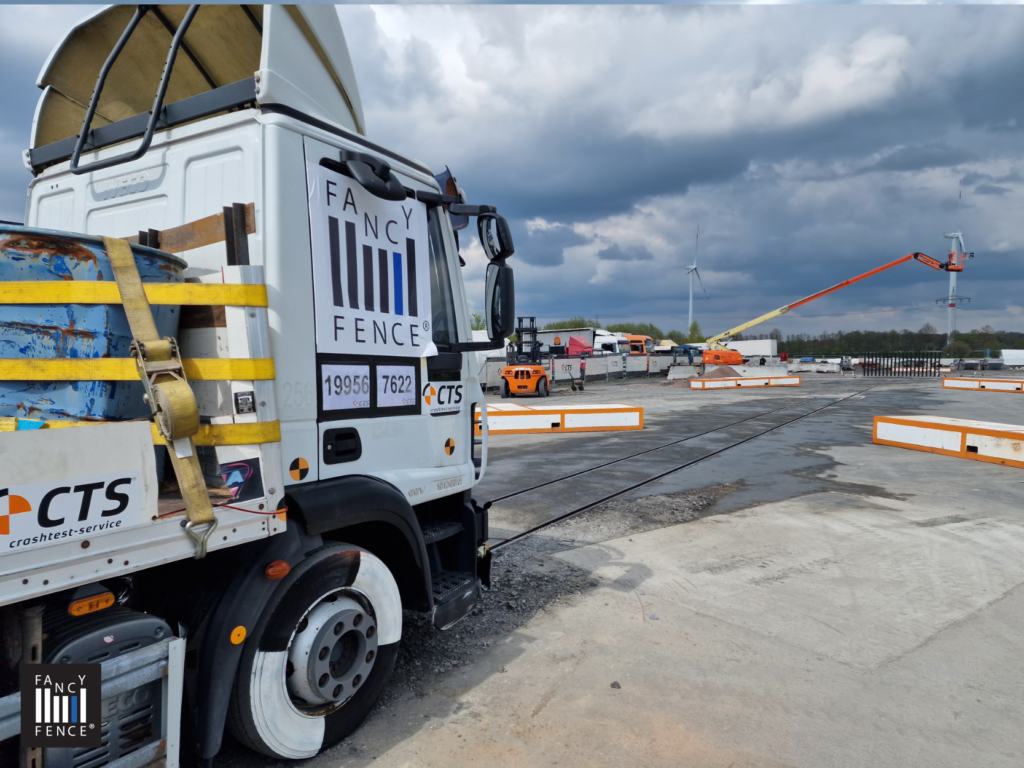
Security of european public places
HVM solutions, such as Fancy Fence HVM, have become an indispensable part of protecting public spaces in Europe. Their ability to prevent attacks using vehicles, combined with aesthetics, is a step forward in ensuring security in an increasingly unpredictable world. Therefore, we need such solutions to protect our cities and centers from potential terrorist threats.
This might interest you: https://www.fencingtimes.com/_files/ugd/9dc474_1042bb81cc85491b9e1d4d385fd2fe8a.pdf
Retractable gates and cultural heritage
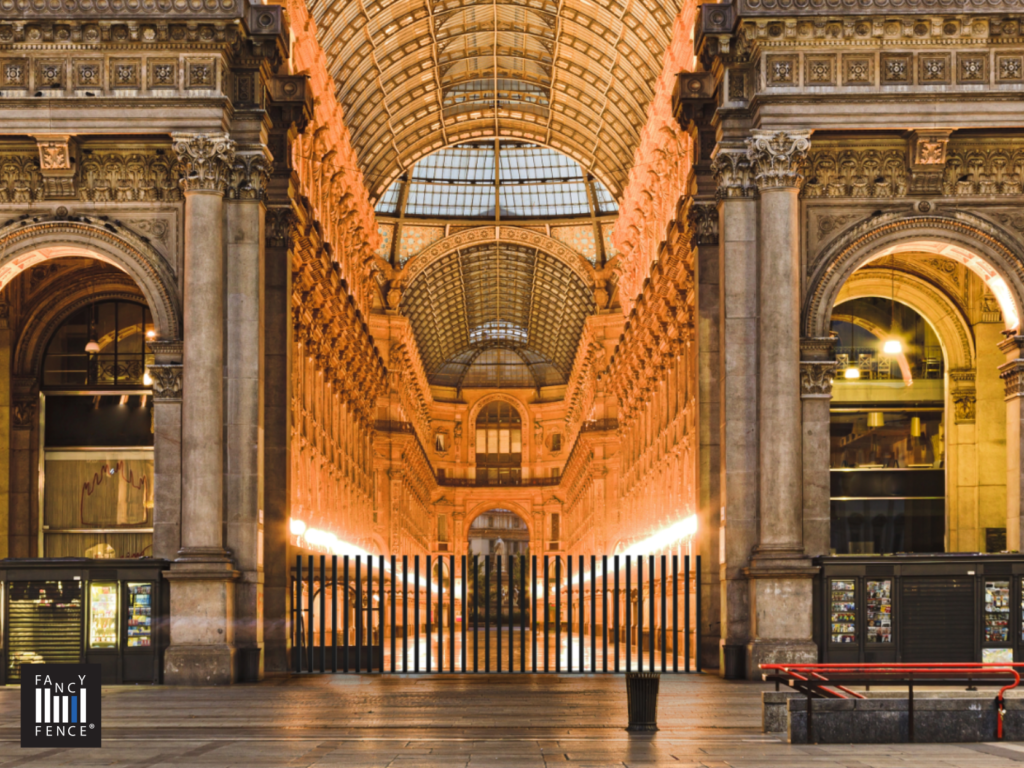
HVM Anti-terrorism retractable gates and the protection of Cultural Heritage
Protecting cultural heritage is an important aspect of the life of every society. Preserving historical sites, monuments, and cultural heritage is not only a task for historians and conservators, but also for urban planners and designers. In this context, HVM gate(Hostile Vehicle Mitigation) sliding gates become an invaluable tool in the preservation and protection of cultural heritage.
Threats to Cultural Heritage: Retractable garden gates
Historical sites, monuments, and cultural heritage often attract crowds of tourists and visitors. Unfortunately, they also potentially become targets for acts of vandalism and terrorism. Vehicle attacks have unfortunately become a common occurrence, putting the safety of these places into question.
Functional underground fences as a solution
HVM vertical fence are an innovative and effective solution for the protection of cultural heritage. Their main task is to prevent hostile vehicles from accessing the protected area and to stop them before they can enter. This way, historical sites and monuments can be better protected against potential attacks.
Minimalist design and protection. Automatic retractable gates
A key feature of the HVM sliding gates is their minimalist design, which allows for the preservation of the surrounding aesthetics. These gates can be easily integrated into the environment, without disturbing the original character of the place. This is important, especially in the case of protecting cultural heritage, where aesthetic value is of great importance.
HVM sliding gates are an innovative solution that combines protection and aesthetics. Thanks to them, the protection of cultural heritage becomes more effective and discreet. This tool can help in preserving and protecting our cultural legacies for future generations. Contact us at https://fancyfence.eu/contact/.
Metal retractable gates
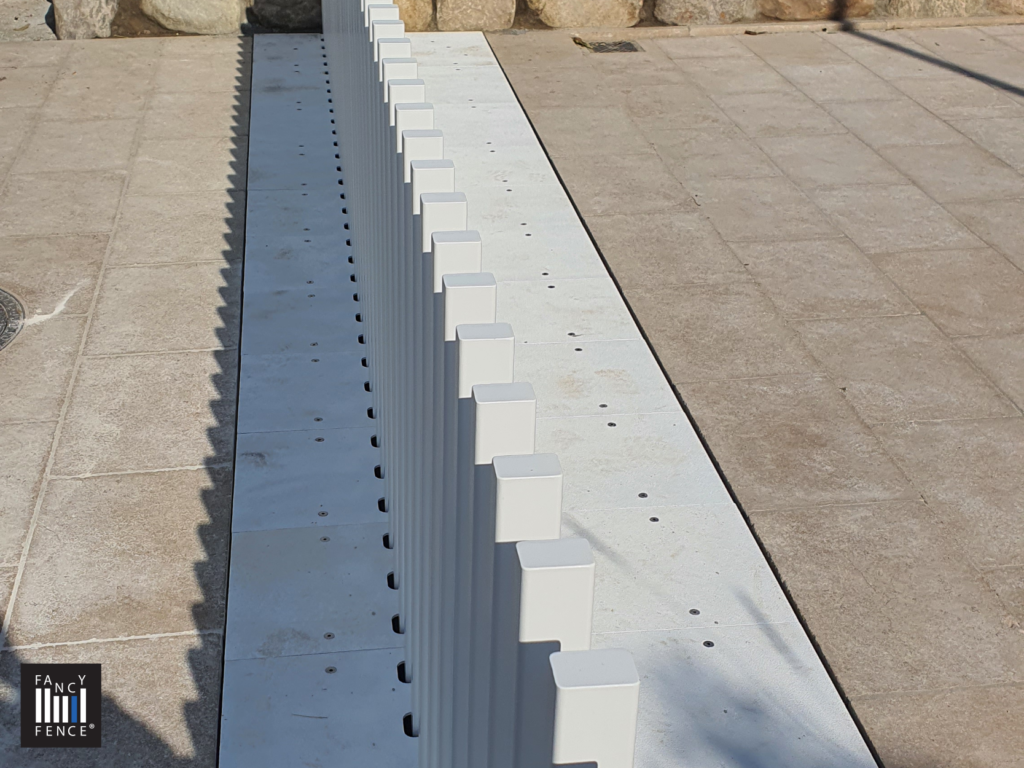
What are the available options?
Fences and gates are an important element of any property, affecting both its functionality and aesthetics. Thanks to growing technological progress and increasing customer expectations, the market for metal fences today offers a wide selection of modern solutions that meet diverse needs. In this article, we will look at the available options, and also learn more about the innovative solutions proposed by Fancy Fence.
Traditional metal fences
Traditional metal fences, made of steel or iron elements, are a solid and durable choice. They are available in various patterns and styles, allowing for the fence to be matched to the character of the property. These fences can be painted any color, offering great freedom in design. However, traditional metal fences may require regular maintenance, such as painting or rust protection. Check out https://fancyfence.eu/product-2/
Modern sliding gates. Underground fences for properties
Sliding gates are an innovative solution that allows for effective use of space. Thanks to a built-in drive, these gates lower into the ground, becoming invisible when not in use. They are not only functional but also aesthetic, perfectly matching modern architecture. Sliding gates are available in various widths and can be combined, creating fences of any length.
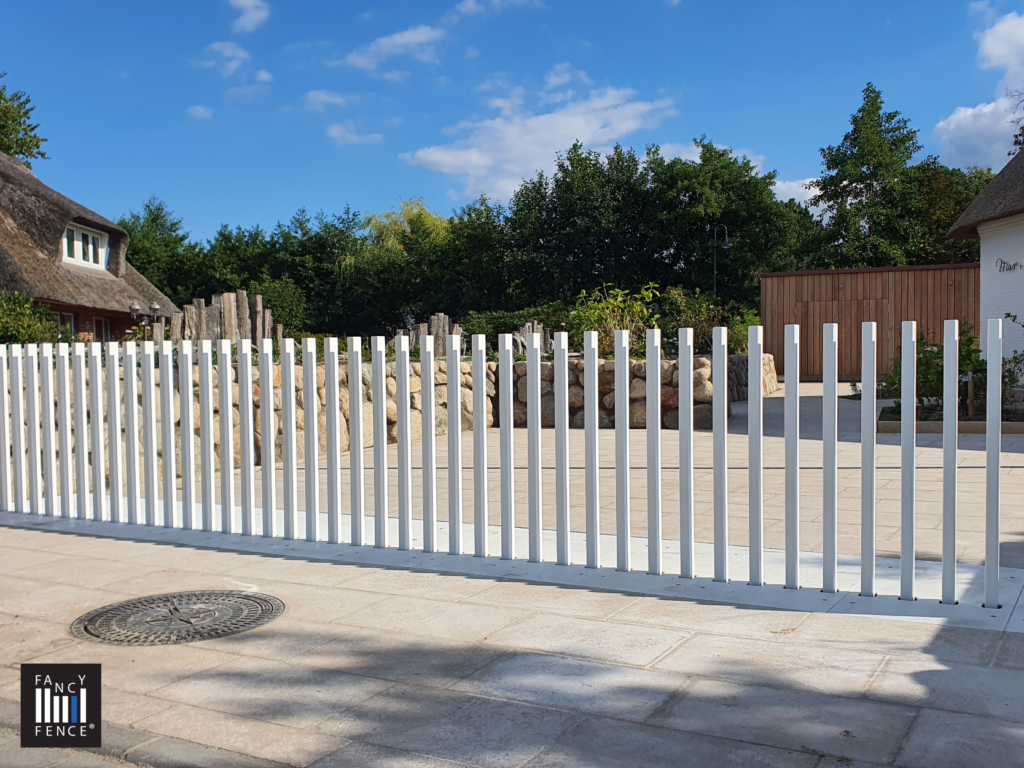


Anti-terrorist gates
In the face of increasing threats of terrorist attacks, anti-terrorism fences are becoming increasingly popular. They offer protection against hostile vehicles and ensure safety in public places, such as metro stations or squares. Anti-terrorism fences, including gates, are designed to withstand the impact of a truck or another vehicle. This solution combines functionality with protection.
Check out the implementations: https://www.instagram.com/fancy.fence/
Fancy Fence System. Metal retractable gates
Fancy Fence offers innovative solutions in the field of metal fencing. Their FANCY FENCE system of retractable gates and fences combines modernity, functionality, and reliability. The main element of the system is a gate that retracts into the ground, becoming invisible when not in use. This allows for maintaining the aesthetic appearance of the space.
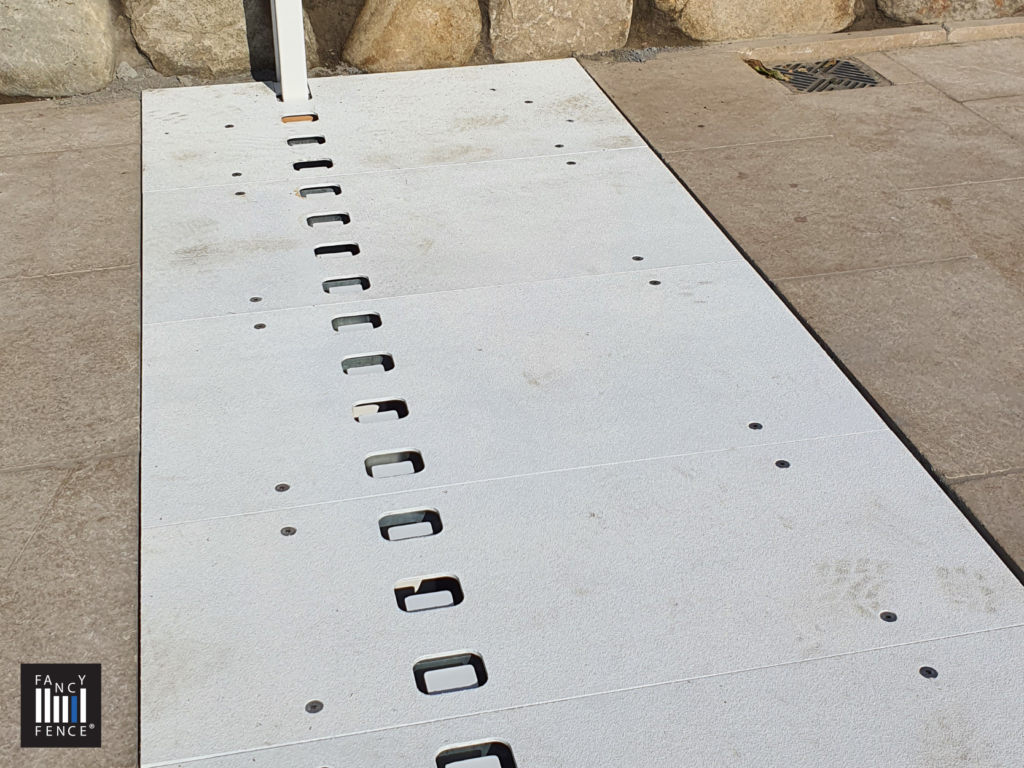
Summary
The choice of the right metal fence depends on many factors, such as architectural style, functionality, and the level of protection required. Traditional metal fences are suitable for many applications, while modern sliding gates and anti-terrorism fences are excellent solutions for places requiring a higher level of security. Meanwhile, the innovative solutions proposed by Fancy Fence combine functionality, aesthetics, and reliability, making them an excellent choice for those looking for something special.
Discover different applications of gates at https://fancyfence.eu/one-system-multiple-applications/
If you are interested in modern metal fences, it is worth considering the various options available on the market and choosing a solution that best meets your needs. Regardless of your choice, a metal fence can become not only a protective element but also an ornament of your property.
Fences and gates retractable into the ground. You must see this: https://www.youtube.com/channel/UC09KcIlcLUfGUsoLPmEAi6w/videos
Materials and durability of HVM gates
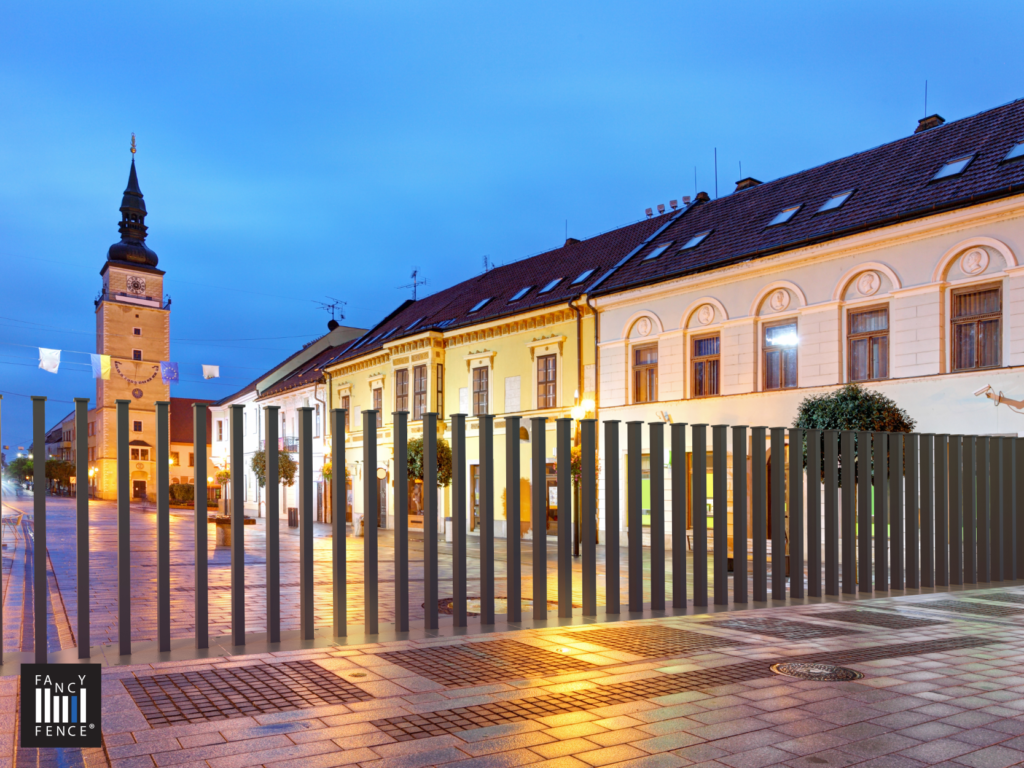
What materials increase the durability of HVM gates. Anti-terrorist gates
Urban space security is a topic that has become extremely important in today’s times. In response to increasing threats, innovative solutions have emerged, one of which is the HVM (Hostile Vehicle Mitigation) gate. One of the key factors determining its invincibility is the materials from which it is made.
HVM access control system gates or public space protection
HVM gates are designed to prevent terrorist attacks using vehicles. Their goal is to stop hostile vehicles while ensuring the safety and aesthetics of urban spaces. Check out different applications at https://fancyfence.eu/one-system-multiple-applications/.
Materials as a key element of durability
One of the most important elements that affects the durability of the HVM gate is the materials from which it is made. The manufacturer of the HVM fance realises that it is the materials that determine its reliability. The secret of the durability of the HVM gate lies in its hidden structure. The interior of the gate profiles has been reinforced with various materials, including steel and concrete. This makes the gate ready to collide with the enemy.
*This might interest you: https://www.fencingtimes.com/_files/ugd/9dc474_1042bb81cc85491b9e1d4d385fd2fe8a.pdf
Taut frame. Retractable entrance gates
Another key element of the durability of the HVM gate is its taut frame. Similar to the strings in a tennis racket, the frame is prepared to absorb the energy of the collision and repel the vehicle.
To ensure that the HVM vertical fence can stop a hostile vehicle, numerous simulations and tests have been conducted. The results of past tests confirm its reliability.
Materials determining safety. Securing underground fences
Materials such as steel and concrete give the HVM vertical gate exceptional resistance to impact. They constitute the first line of defense against hostile vehicles. They are a key factor in determining its durability and invincibility. For architects, urban planners, and city authorities who care about the safety of urban spaces, the HVM gate is an inspiration for creating protection that does not violate the aesthetics of the city. Thanks to these materials, our cities are becoming more resistant to contemporary threats while maintaining their unique character.
Integration of Various Drive Systems in Gates: Flexibility of Drive Choice in Fancy Fence Products and Their Importance for Individual Projects – Automatic retractable gates
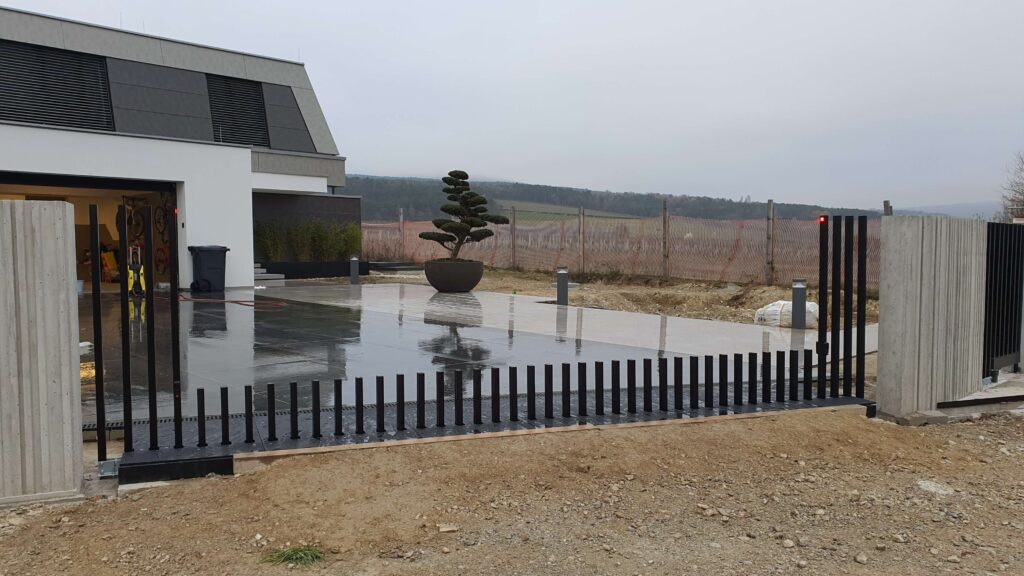
Modern architecture and design demand flexibility and adaptation to the individual needs of the client. In the context of gates, the choice of the appropriate drive system is crucial. Therefore, it’s worth examining how Fancy Fence allows for the integration of various drive systems in its gates, providing solutions tailored to each project.
Why is the choice of drive important?
The gate’s drive system not only governs its movement but also influences its functionality, durability, and aesthetics. Choosing the right drive can affect the gate’s performance, its lifespan, and the overall user experience.
Flexibility of choice with Automatic Retractable Gates – Fancy Fence
Fancy Fence understands that every project is unique. That’s why the company offers the possibility of integrating various drive systems, from Tousek Pull T15 to other popular brands such as Came, Faac, or Nice. Such flexibility allows architects and designers to tailor the gate to the specific requirements of each project.
How do different drives impact the functionality of the gate?
Not all drive systems are the same. Some might be more suitable for heavier gates, while others might be better for gates with higher usage frequency. Fancy Fence, with its experience and expertise, assists clients in choosing the drive that best meets their needs.
Conclusion
The integration of various drive systems in gates is key to creating personalized solutions for each project. Thanks to the flexibility offered by Fancy Fence, architects and designers can be confident that their designs will not only be aesthetic but also functional and durable.
#Automatic retractable gates




